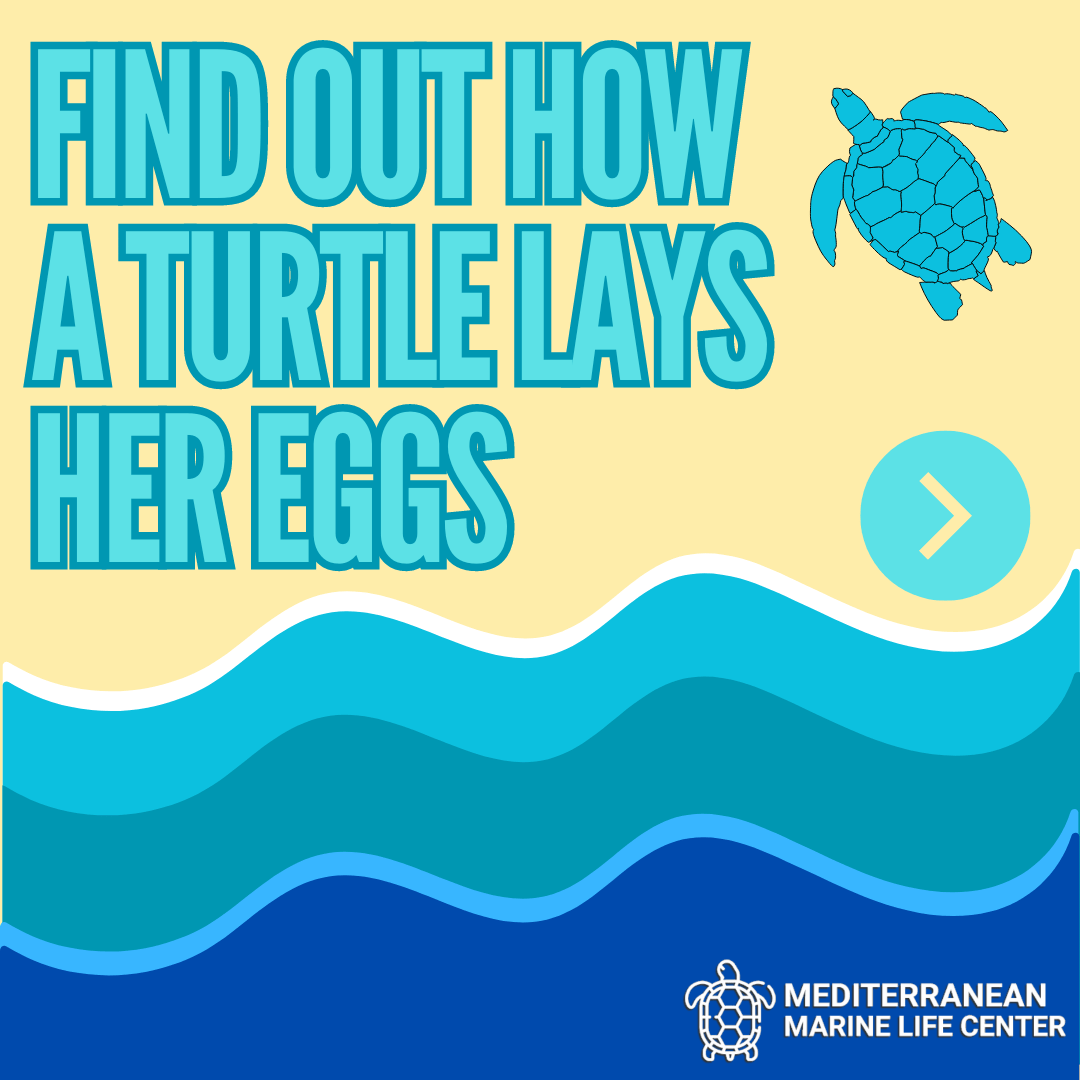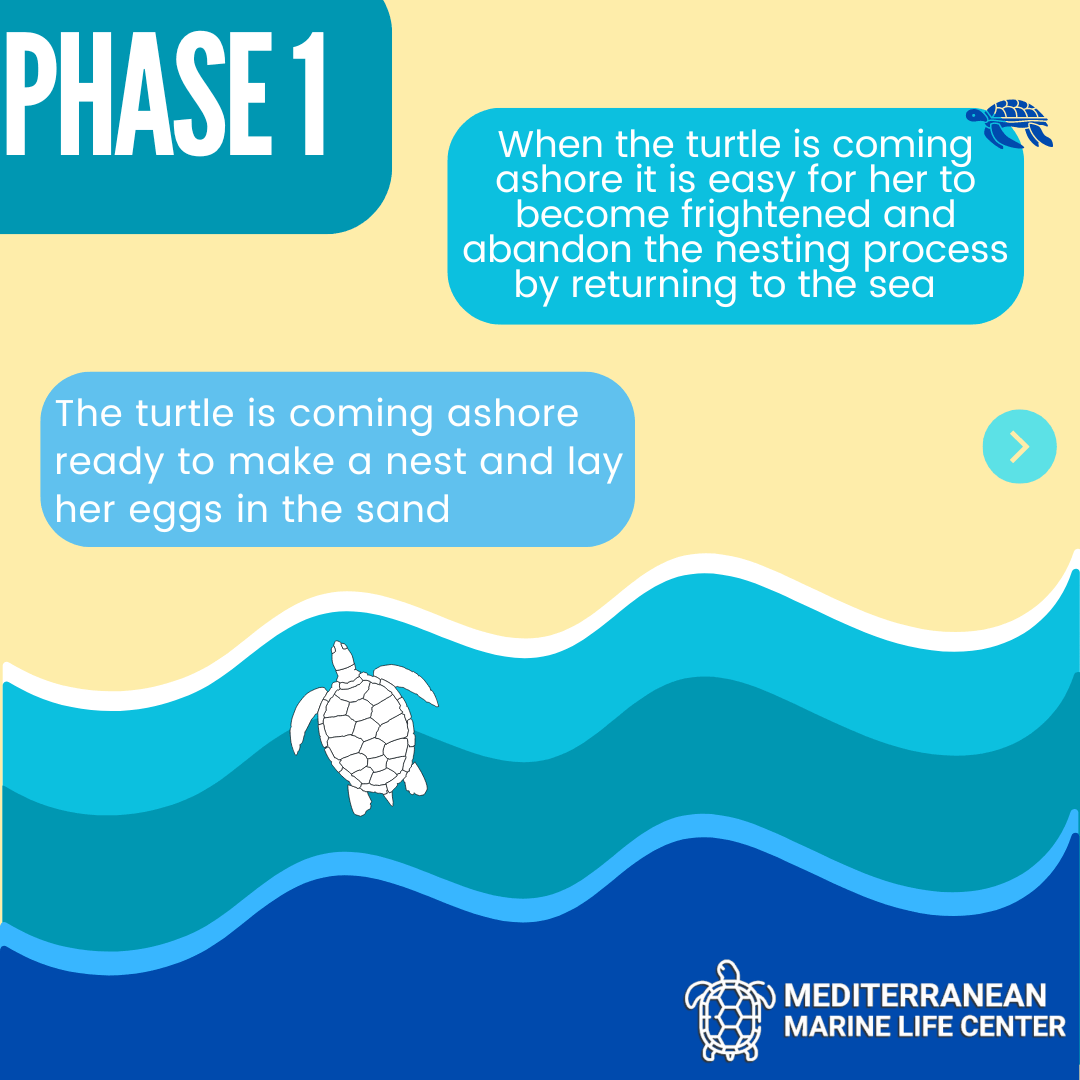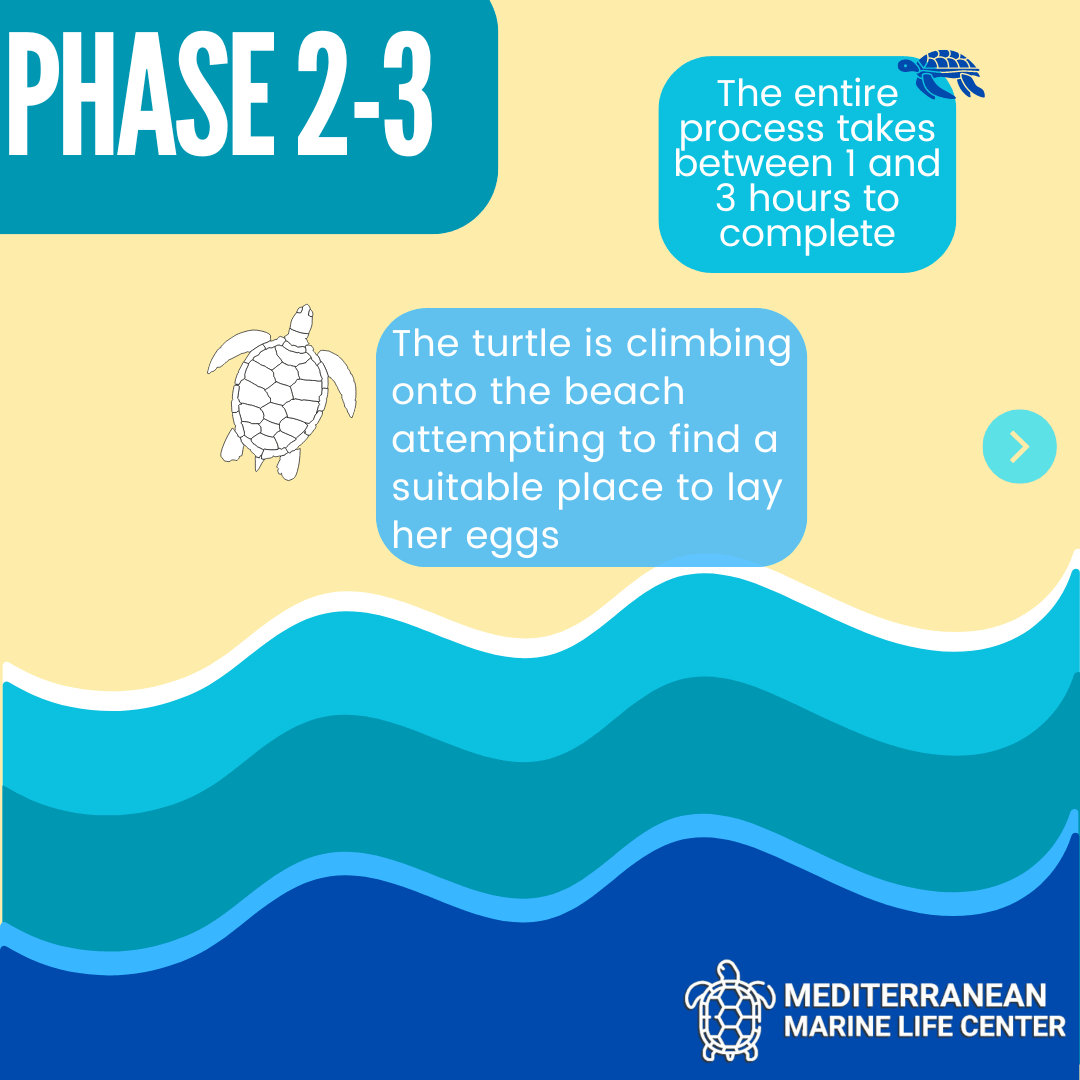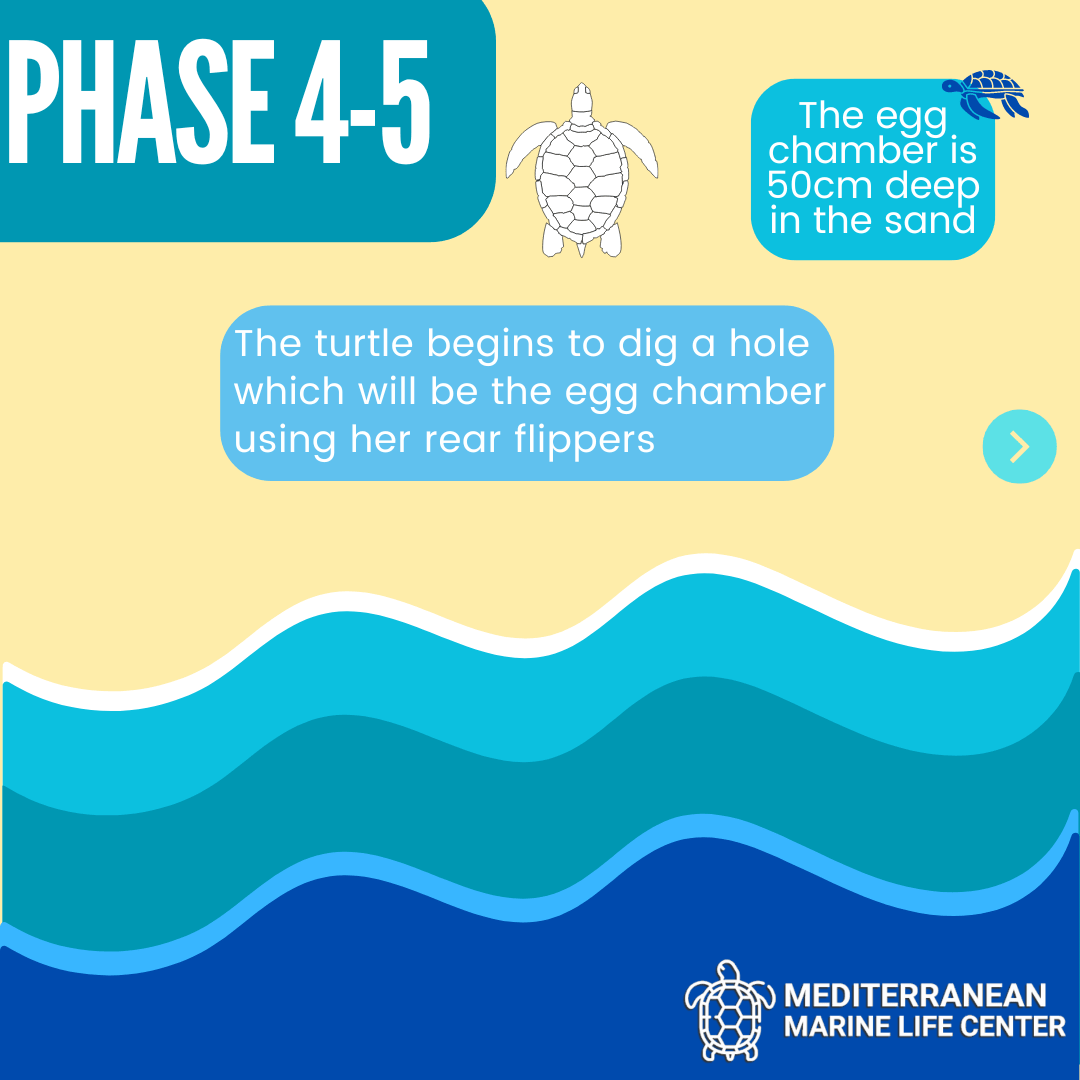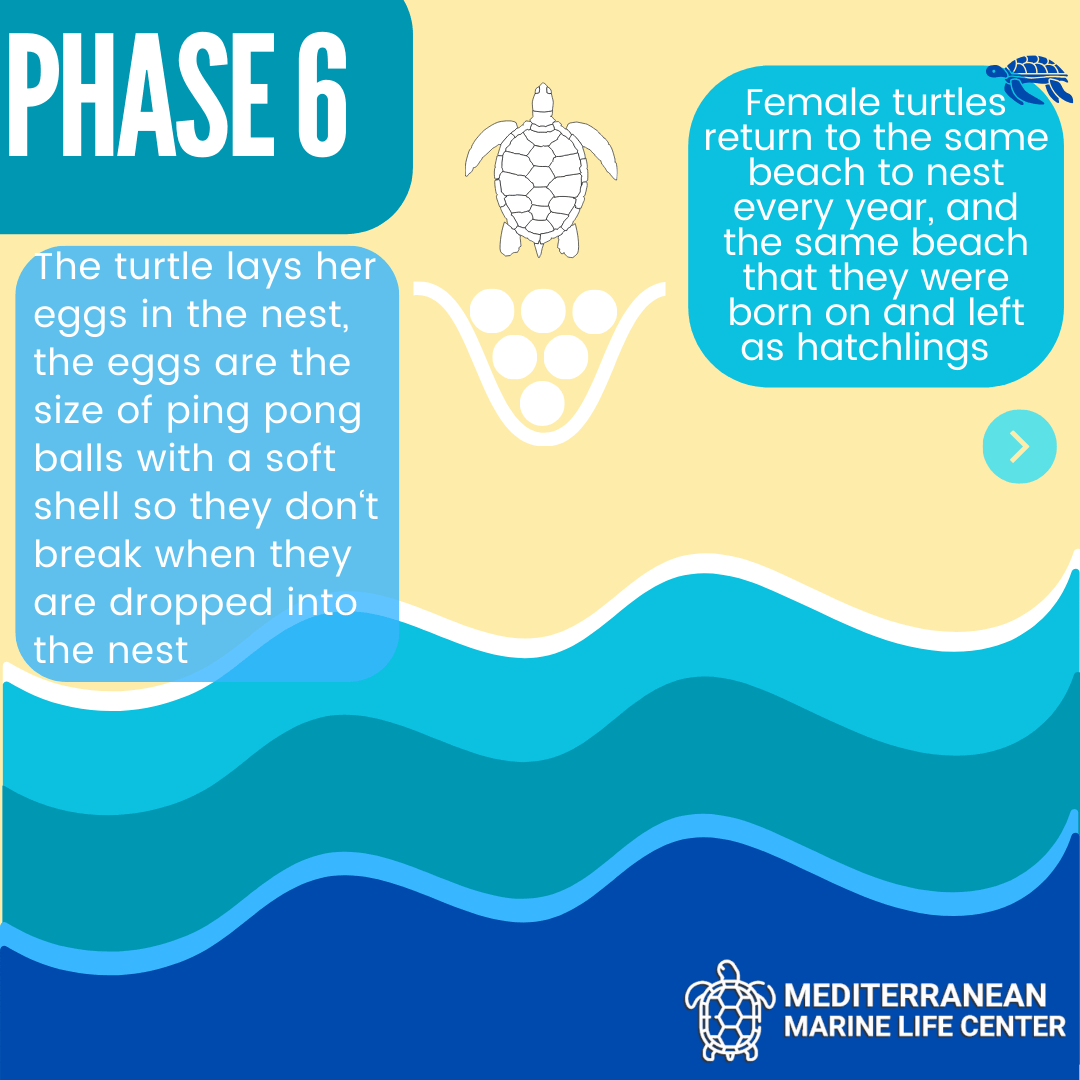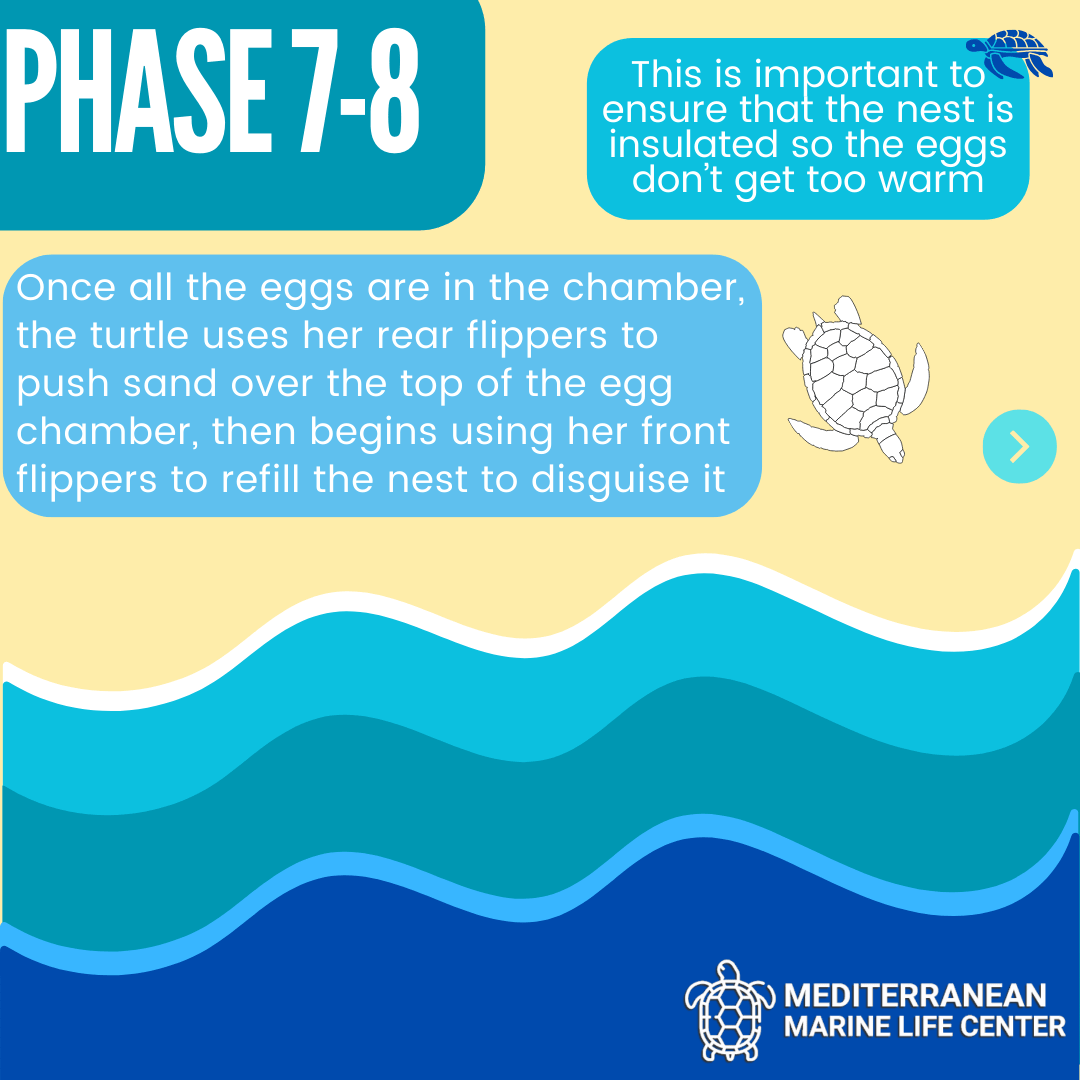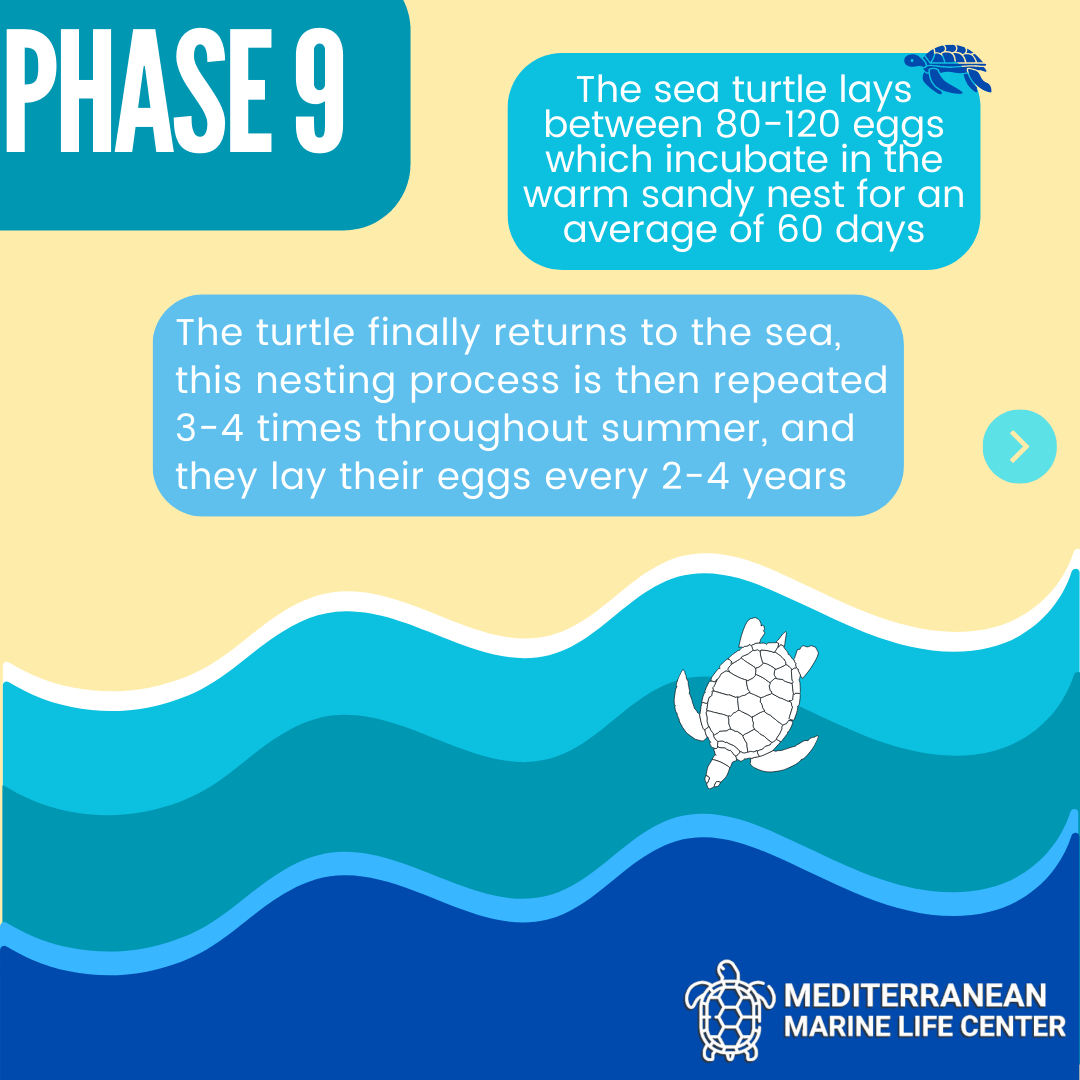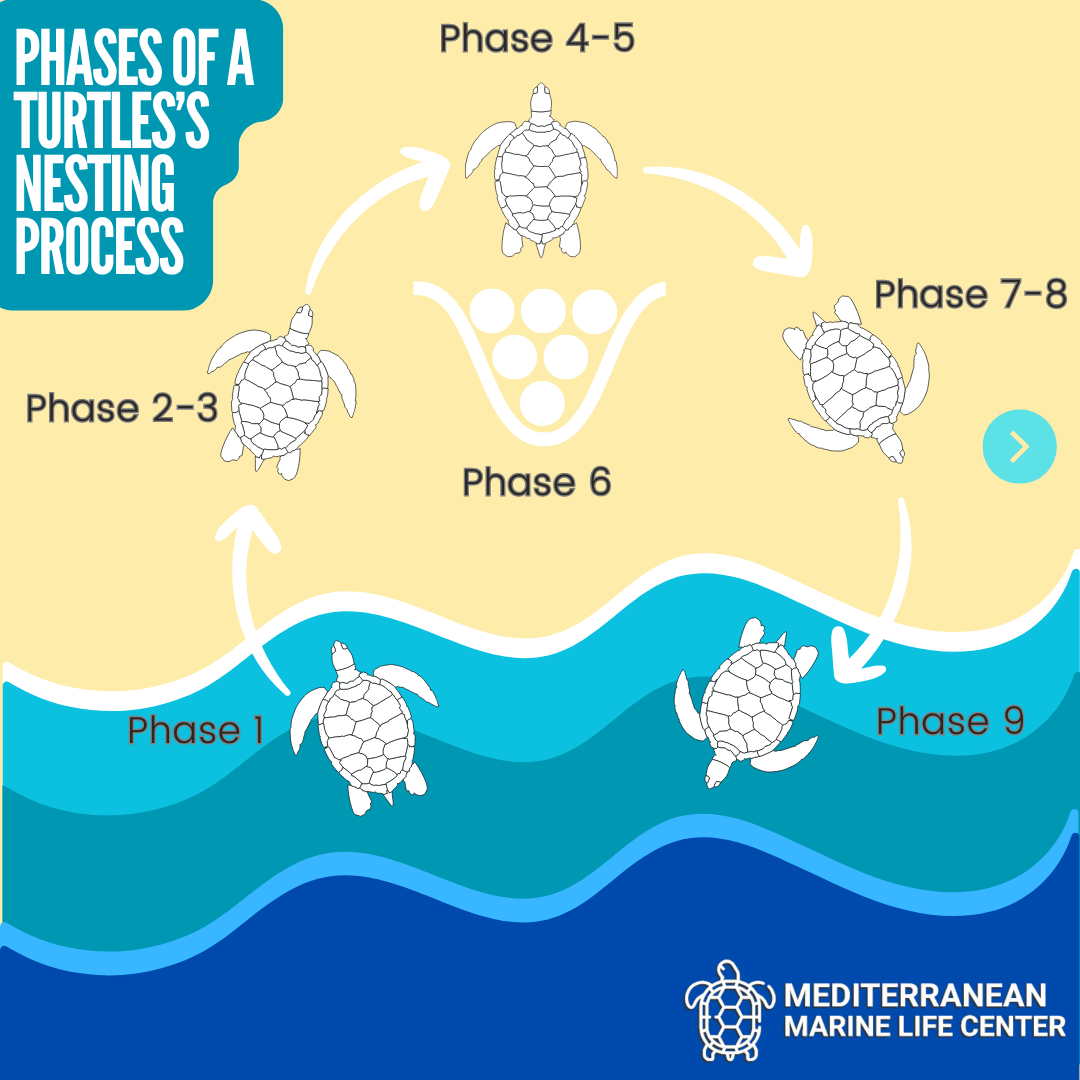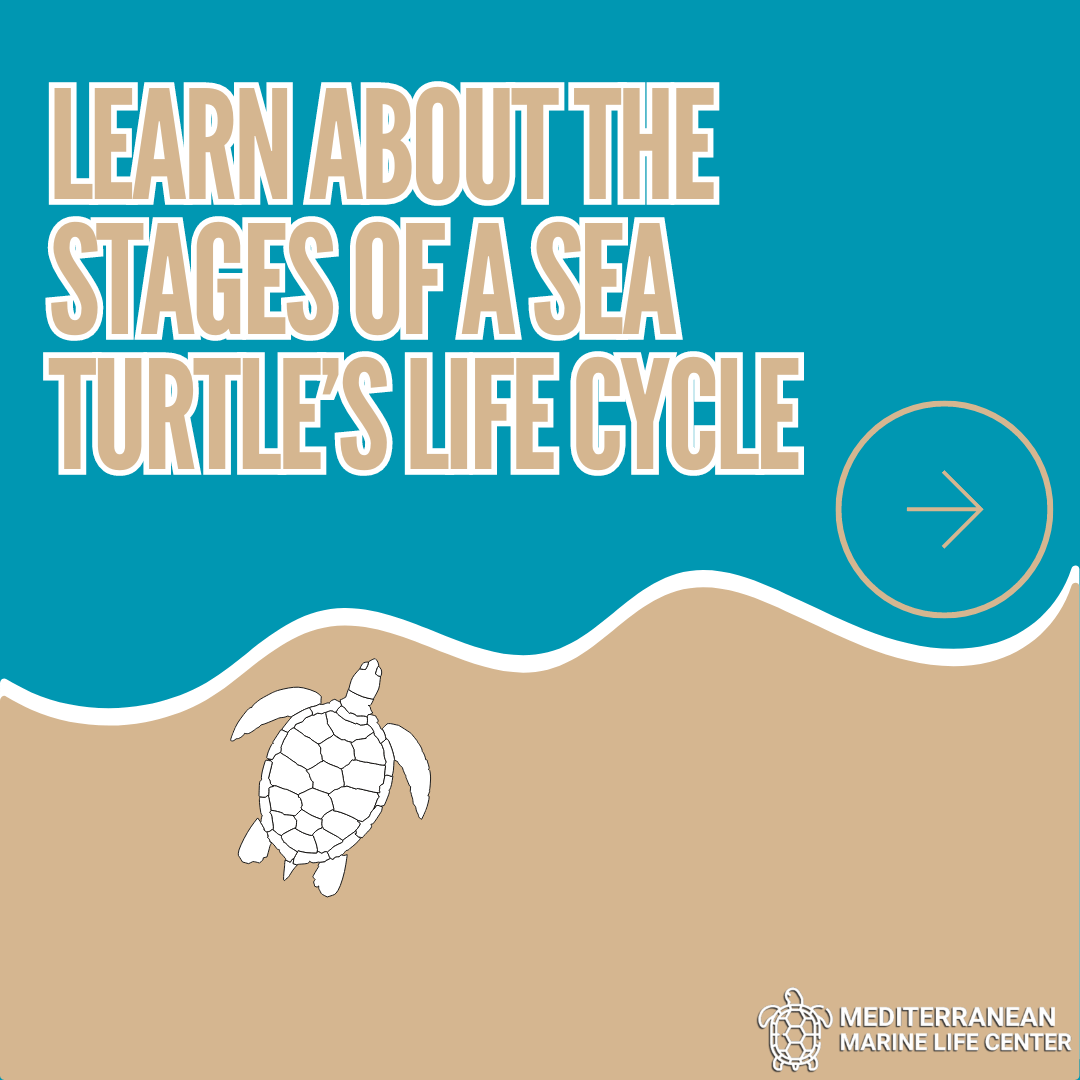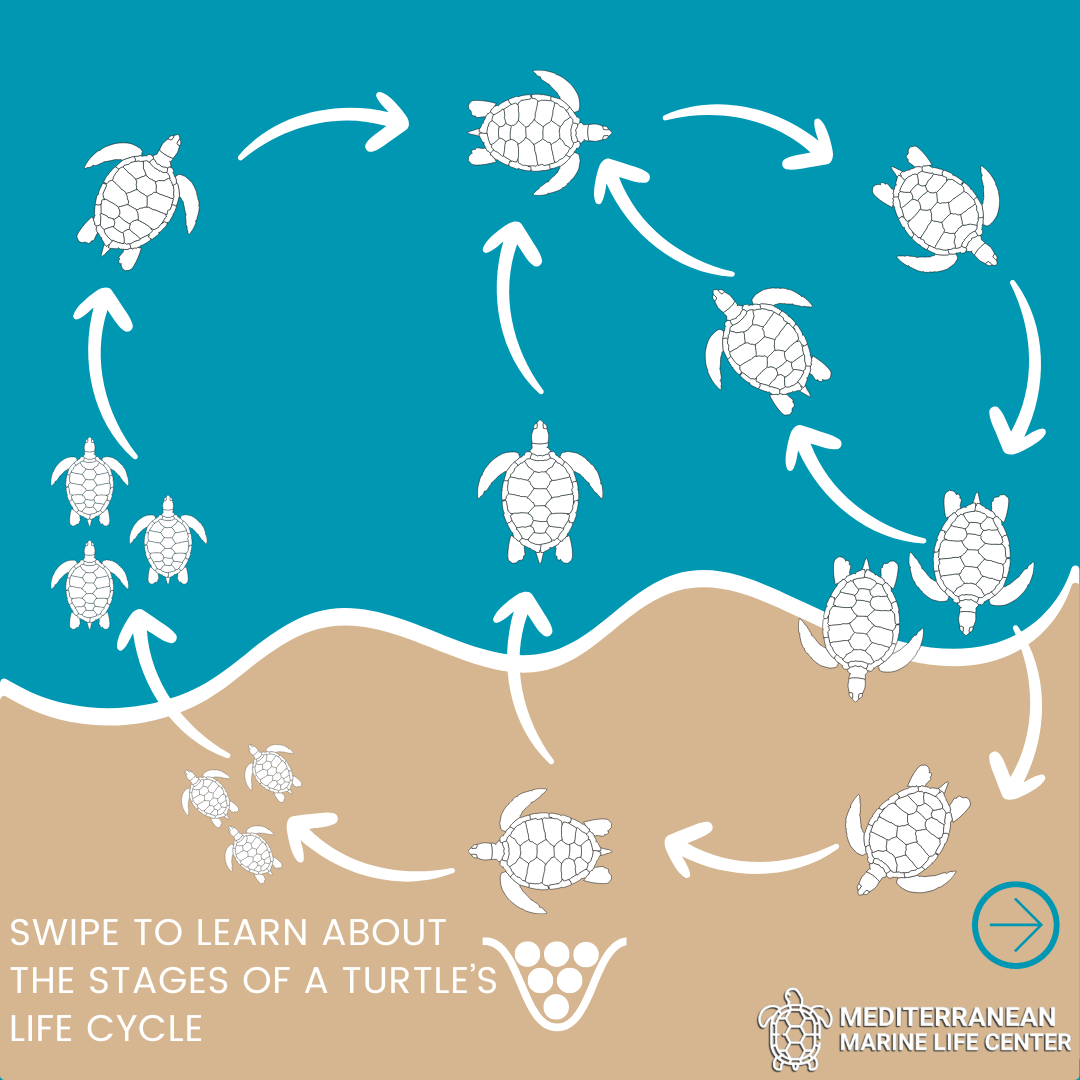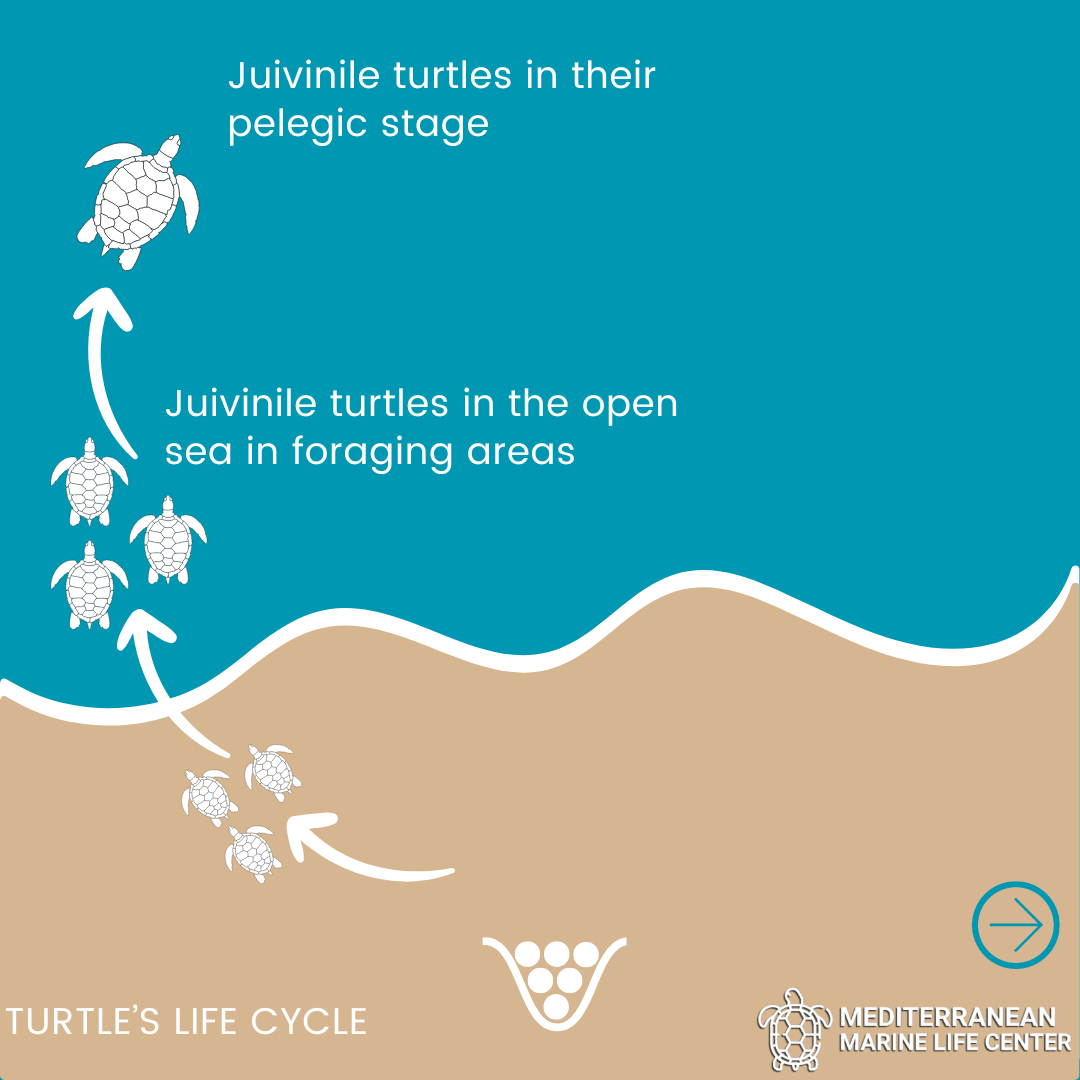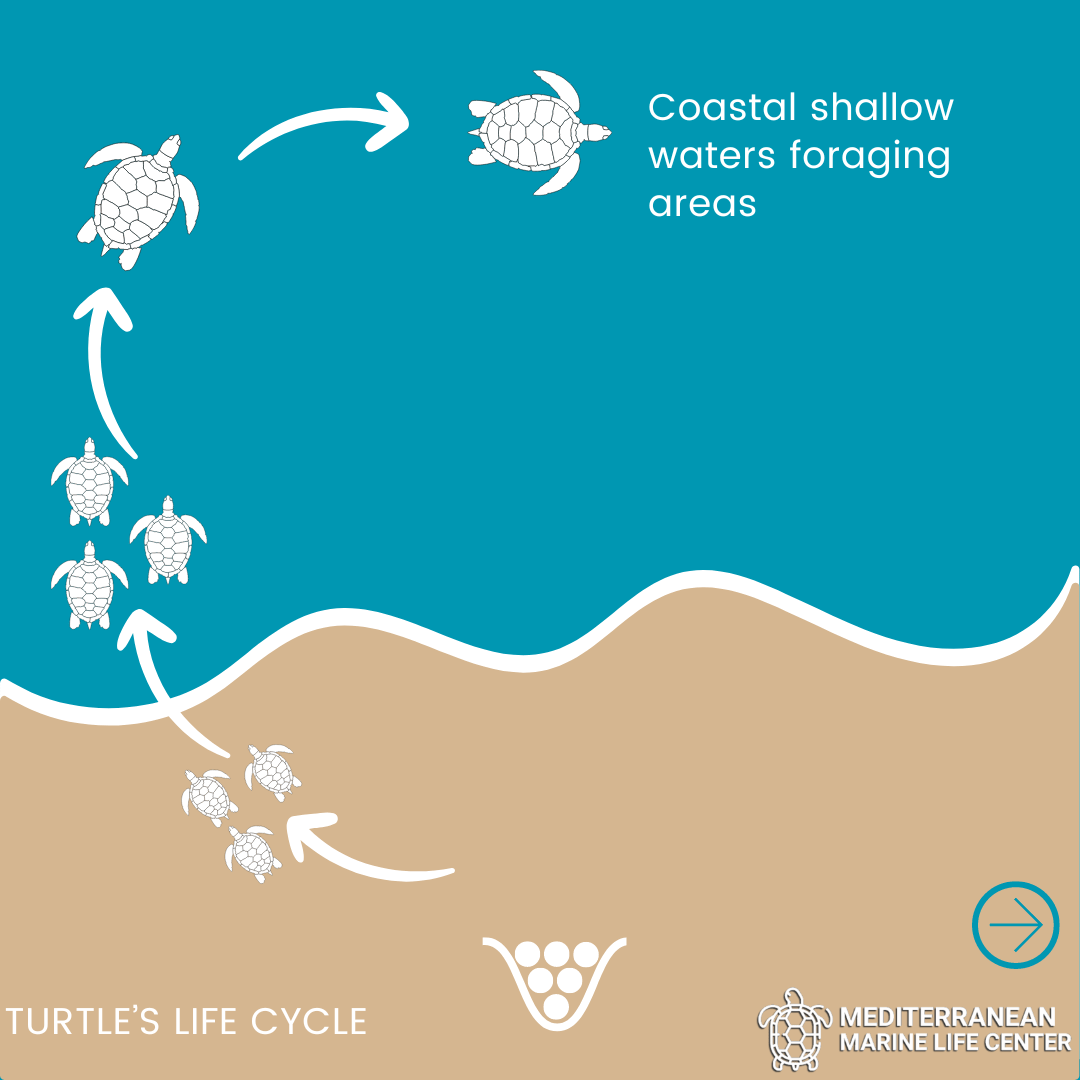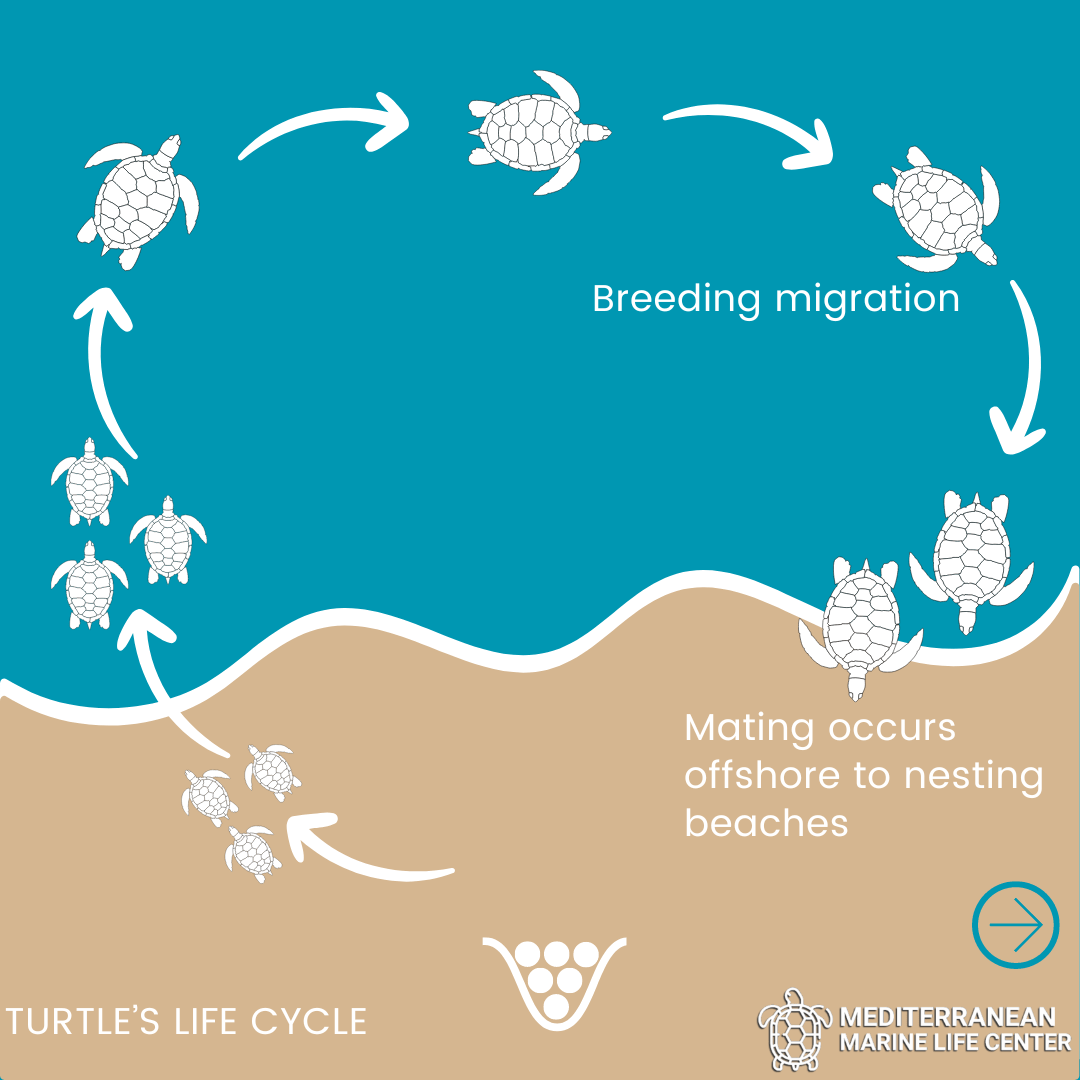Seven species of sea turtles exist (loggerhead, leatherback, flatback, hawksbill, olive ridley, kemp ridley, and green turtle). The loggerhead sea turtles are the largest hard-shelled turtles in the world named after their large head and strong jaws, allowing them to crush foods including crustaceans. They are reptiles that grow to almost 1 metre in length, although they breathe air using their lungs, they spend almost all their life underwater, feeding on jellyfish, molluscs, and other invertebrates. When diving they can hold their breath for up to 20 minutes and then rest for hours without breathing underwater.
Sea Turtle Life Cycle
In early spring turtles migrate from the Mediterranean foraging areas to Laganas Bay to mate, and then nest on the beaches from mid-May to late-August. At night females come ashore, choose a suitable spot, and use their flippers to dig an egg chamber, which tends to be 40-50cm deep, where they lay on average 120 eggs (the size of ping pong balls with a soft shell so they don’t break when they are dropped into the nest), this process is repeated 3-4 times throughout summer, and they lay their eggs every 2-4 years. The eggs incubate in the nest for 42-70 days, 60-70% of which hatch. The sand temperatures determine the sex of the hatchlings, for example above 29oC, the hatchlings are primarily female, and below this temperature they tend to be males.
Phases of a turtle’s nesting process:
Biological cycle of a turtle:
Hatchlings are approximately 5cm in size and tend to emerge from their nest at night and find their way to the sea through visual orientation toward the brightest horizon (the horizon of the sea is brighter than that over land because the sea reflects light more readily than land). Hatchlings are thought to imprint the location by a ‘magnetic compass’, which is a natural process so that they may return to the same area to breed (referred to as ‘homing’ behaviour’). Once the hatchlings leave the nest, they have around 10 hours of darkness to build up their strength and start their 48-hour journey following the current to find seagrass and plankton (algae) to feed off, from there they’ll stay and grow for 6 months.
Adult turtles are carnivores and feed on crustaceans (conches, molluscs, horseshoe crabs), jellyfish, shrimp, sponges, fish, and seaweed. Hatchlings are omnivores and feed primarily on sargassum. Loggerheads reach sexual maturity between 17 and 33 years, and scientists believe that they live between 50 and 70 years.
Turtles usually move slowly through the water, but when they feel threatened, they can swim away quickly. Their greatest threat, however, is climate change, not predators. The temperature of a turtle’s eggs during incubation determines their sex. If temperatures continue to rise, it could feminise turtle populations making it increasingly more difficult to produce future generations due to a lack of males. Climate change also threatens to destroy the reef and seagrass ecosystems which turtles depend on. A healthy ocean can dramatically help to halt the climate crisis.

